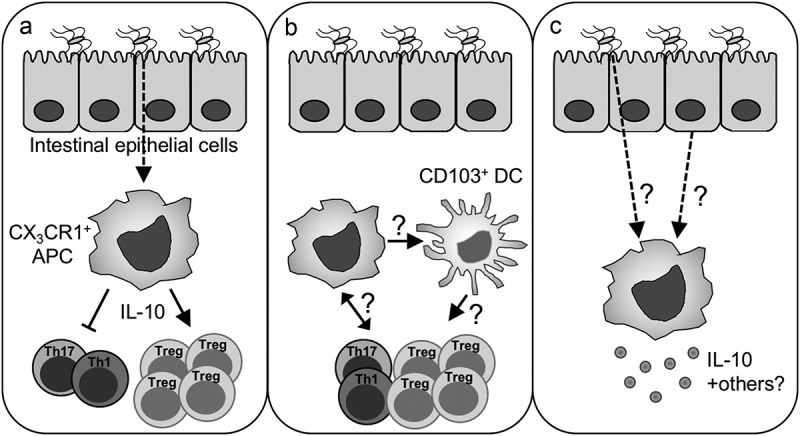Figure 1.

Potential mechanisms of anti-inflammatory intestinal immune responses. (a) Attachment of microbes to the intestinal epithelia leads to IL-10 production by CX3CR1+ APCs. IL-10 suppresses Th1 and Th17 cell responses and induces Treg cells. (b) CX3CR1+ APC-derived signals could modulate the T effector/Treg cell balance directly or indirectly through other intestinal APCs such as CD103+ dendritic cells. Crosstalk between T cells and CX3CR1+ APC could further direct the functions of CX3CR1+ APCs. (c) Modulation of CX3CR1+ APC function by intestinal microbes may depend on direct recognition of microbes or microbial products or microbial signals may be relayed by intestinal epithelial cells.
